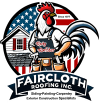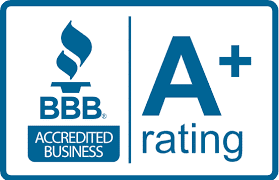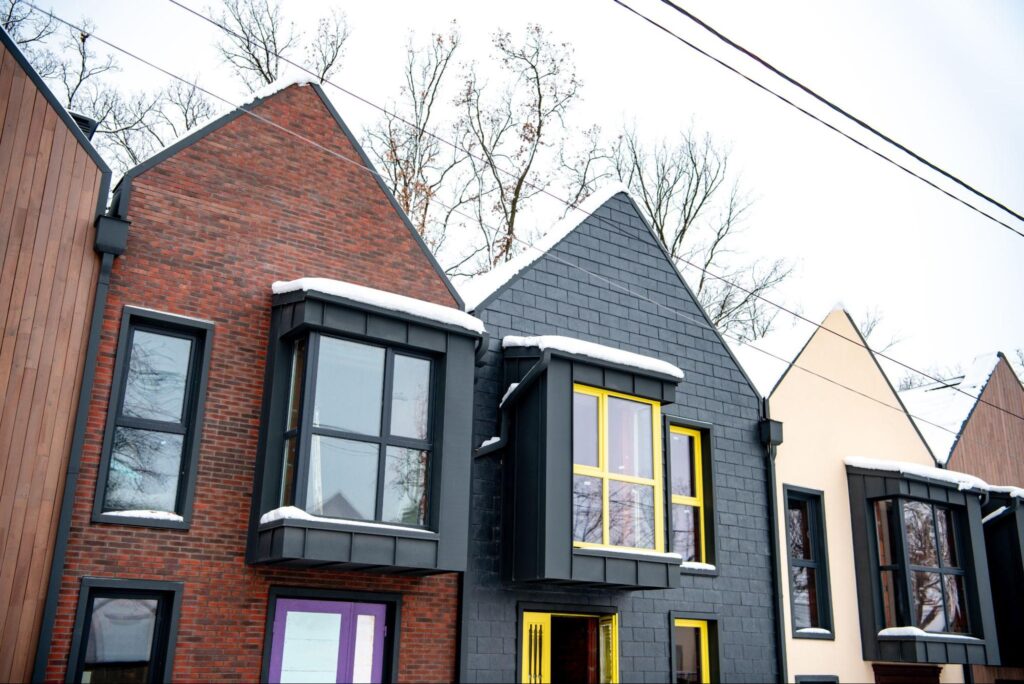
home’s siding often shapes a buyer’s first impression and sets the tone for the rest of the experience. Worn, outdated panels suggest deeper issues, even if everything inside is pristine. On the other hand, clean, modern siding signals care, durability, and a wise investment. Choosing the right replacement siding can significantly enhance a property’s value, transforming it from average to standout.
Why Replacement Siding is a Smart Investment
The exterior of your home is more than a shell; it’s a financial asset and the face of your property. Siding, when in poor shape, immediately drops perceived value. But new siding does more than add visual appeal. It adds real value that’s tied directly to resale potential and structural protection.
Siding Impacts More Than Just Appearance
Many people think siding is purely cosmetic, but it serves a much broader purpose. It shields the home from rain, wind, pests, and harmful UV rays. When siding is damaged or outdated, it invites moisture, mold, and structural rot. These issues silently lower your home’s lifespan and appraisal value. Replacing it early prevents more extensive siding repairs that cost significantly more.
Homebuyers Notice First Impressions
Real estate professionals agree that homes with fresh, modern siding sell faster. First impressions carry weight, and tired siding drags everything down. Clean, well-fitted panels indicate that the home has been well-maintained. New siding also offers a better canvas for modern trim and color combinations. Buyers connect instantly with homes that look move-in ready.
Siding Replacement Often Delivers a Strong ROI
Few home upgrades offer a return as strong as replacement siding. According to Remodeling Magazine’s Cost vs. Value report, fiber cement siding recoups up to 85% of its cost. Vinyl siding is close behind. These numbers often outperform kitchen remodels or bathroom upgrades. It’s one of the few upgrades that pay off financially and visually.
Replacement Siding Options That Really Add Value
Choosing siding is about practicality, climate, cost, and long-term results, not just taste. The best materials perform under pressure while giving your home a crisp, updated look. The following are the top-performing siding options that homeowners choose to raise property value while keeping maintenance costs low.
Fiber Cement Siding
Fiber cement siding blends the beauty of wood with toughness that wood can’t match. It resists fire, insects, and rot with ease. Brands like James Hardie offer styles that mimic real wood grain but last far longer. While the upfront cost is higher than vinyl, its long-term performance justifies the price. It holds paint well and suits modern, farmhouse, and craftsman styles equally well.
Engineered Wood Siding
This type of siding offers the warmth of real wood with reduced maintenance. Made from wood fibers and resin, it can resist cracking, warping, and pest damage. It’s also less expensive than fiber cement but still offers strong curb appeal. Many products are treated to withstand moisture better than traditional wood. It’s a smart option for homeowners who love a classic look but want reliability.
Insulated Vinyl Siding
Vinyl siding remains a popular choice due to its affordability and durability. When paired with built-in insulation, it improves energy efficiency and comfort inside the home. Insulated vinyl also helps reduce noise from outside, adding to its appeal. It’s available in a wide range of colors and styles, many of which mimic more premium materials. Homeowners on a budget can still upgrade both form and function.
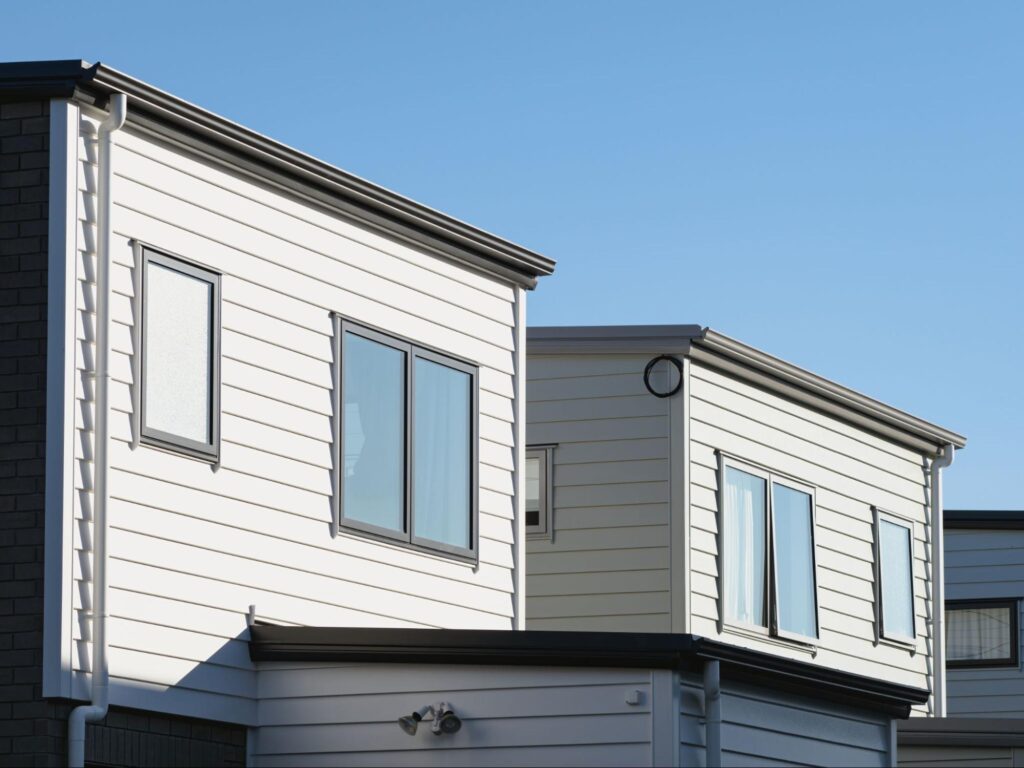
Metal Siding (Aluminum or Steel)
Metal siding suits rural and urban homes with its clean lines and toughness. It resists mold, insects, and fire and won’t warp in extreme temperatures. Steel is stronger and less prone to dents than aluminum, but both offer decades of use. These materials also reflect heat, helping keep indoor temperatures stable. For modern homes, metal siding adds an industrial edge with purpose.
Wood Siding for High-End Appeal
Though high maintenance, natural wood siding still appeals to luxury homes. Cedar and redwood offer timeless character that many buyers still seek. Wood siding requires sealing, painting, and regular checks for moisture issues. But in the right neighborhood, it can support premium pricing. It’s often best for historic properties or upscale renovations.
Choosing the Right Replacement Siding for Your Property
Matching the right siding to your home isn’t just about trends; it’s about fit. Climate, architecture, and surrounding homes all matter. You want a material that performs well while complementing the area and your long-term goals. Below are critical factors that help homeowners make smart siding decisions.
Match Siding to Your Region’s Climate
Different climates demand different siding strengths. Humid areas benefit from rot-resistant materials, such as fiber cement or vinyl. Cold regions need siding that won’t crack in freezing temperatures, such as insulated vinyl or engineered wood. Dry, hot areas may require materials that resist UV fading and heat expansion. Matching siding to weather conditions avoids future damage.
Blend Style With Neighborhood Standards
Siding should enhance your home’s appearance without clashing with neighboring properties. Choosing the wrong color or material can make a home feel out of place. Neutral tones with subtle accents often appeal to a wide range of buyers. If your neighborhood follows an HOA, check the guidelines before committing. A mismatch could affect resale value and approval processes.
Set a Practical Budget and Future Plan
Think about both upfront costs and lifetime expenses. Some siding may be cheaper now, but it wears out faster. Others may cost more but last two or three times longer. Compare material warranties, installation costs, and upkeep requirements. It’s smarter to stretch your budget for a material that won’t need replacing again for decades.
Coordinate Siding With Other Exterior Projects
Timing is crucial when planning to replace windows, roofing, or trim. Replacing siding after these upgrades helps create a seamless exterior. You’ll avoid gaps, flashing issues, and patchy color transitions. Coordinating projects also helps reduce labor overlap and saves money; long-term planning results in a stronger, more consistent finish.
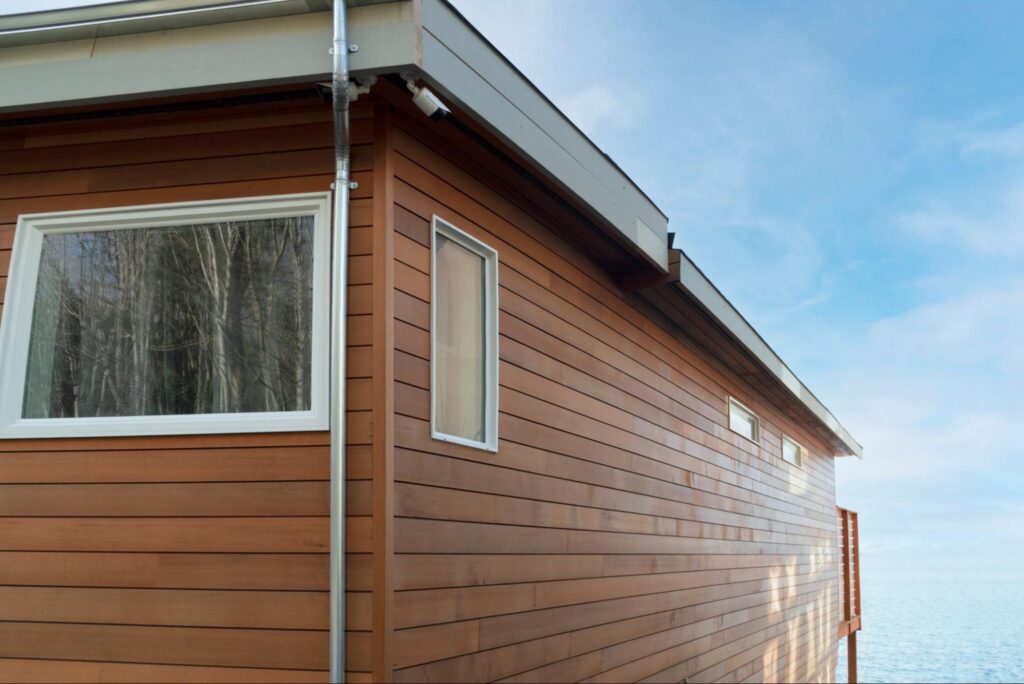
How Replacement Siding Affects Home Appraisal Value
Siding plays a more direct role in home appraisals than many people expect. Appraisers assess external conditions, material quality, and recent updates—all of which siding clearly reflects. If a home has cracked, faded, or outdated siding, the appraised value may drop even if the interior is flawless. In contrast, high-quality siding often supports a more favorable report.
Appraisers Notice Material Type and Age
Professional appraisers evaluate not only the look of the siding but also its type and age. Fiber cement, for example, is often recognized as a durable, premium option. Engineered wood and insulated vinyl also catch positive attention due to their balance of cost and performance. If the siding is new and made from materials with long life spans, that fact can lift the appraisal amount. It shows care, foresight, and reduced near-term maintenance costs.
Fresh Siding Strengthens Comparables in Valuation
Appraisers calculate value using neighborhood comparables, such as recent sales of similar homes. A house with updated siding stands out when nearby homes still have aging exteriors. That advantage can shift the property to the upper range of local pricing. Appraisers may also consider exterior improvements as part of the home’s “effective age,” which can impact financing. The newer the exterior condition, the more favorable the valuation for both buyers and lenders.
Deferred Siding Work Can Lower Property Score
Outdated or damaged siding isn’t just a cosmetic issue; it’s often viewed as a sign of deferred maintenance. That term appears in many appraisal reports and tends to reduce value. Even if the rest of the home is upgraded, old siding can still detract from the overall impression. It suggests that more work (and cost) will be required for the next owner. Replacing siding before an appraisal puts your property in a stronger negotiating position.
The Role of Replacement Siding in Energy Efficiency
Siding protects a home and influences its cost of living. Poorly insulated or aging siding cannot effectively regulate indoor temperatures, forcing HVAC systems to work harder, resulting in higher energy bills and reduced comfort. Choosing siding with thermal performance in mind adds lasting value beyond aesthetics.
Insulated Siding Helps Control Indoor Temperatures
Insulated vinyl siding includes a foam layer that fills gaps behind the panels. It helps reduce heat transfer, keeping cool air inside during summer and warm air in during winter. Homes with insulated siding often show lower utility bills than those with basic vinyl siding. Over time, these energy savings can offset part of the siding cost. Buyers recognize this benefit, especially in areas with extreme weather swings.
How Fiber Cement and Engineered Wood Add Efficiency
While not inherently insulated, fiber cement and engineered wood can be effectively paired with modern weather barriers and exterior insulation layers to enhance their thermal performance. When installed correctly, they help seal the home against drafts and moisture. They also offer better durability than traditional wood, maintaining their performance for a longer period. Combining these materials with upgraded insulation wraps can lead to energy improvements. This layered approach increases both comfort and property value.
Better Siding Lowers HVAC Stress and Extends Lifespan
Energy-efficient siding doesn’t just save money; it helps preserve other home systems. When heating and cooling systems are not constantly running, they last longer and require fewer repairs. It reduces long-term maintenance costs that buyers consider when making their decision. When paired with window upgrades and attic insulation, energy performance can become a selling point. Together, these improvements make homes more competitive in today’s market.
Upgrade With Replacement Siding That Holds Real Value
The market rewards homes that show care, foresight, and quality materials, starting at the curb. Replacement siding isn’t just about fixing what’s broken. It’s a move that protects your investment, strengthens resale appeal, and cuts long-term costs. Talk to a trusted siding contractor and take the next step toward a home that stands out for all the right reasons.
Explore more smart home improvement insights on the Faircloth Roofing, Inc. blog.
